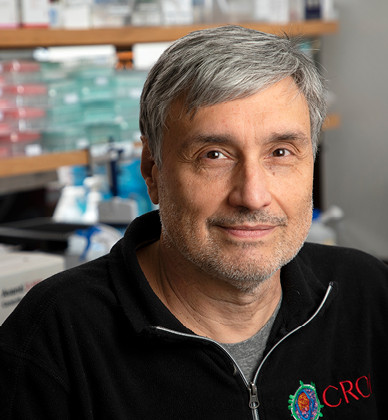Guido Silvestri, M.D.
Comparative Pathology
Emory University
Recruited: 2010
Guido Silvestri wants to know why people with HIV get sick, but non-human primates with a nearly identical virus don’t. The answer, he thinks, could lead to a vaccine that keeps HIV from destroying the immune system.
As chief of microbiology and immunology at Yerkes National Primate Research Center, Silvestri investigates disease in macaques and mangabeys — monkey species that are frequently infected with simian immunodeficiency virus, or SIV. The virus, which is very similar to HIV, replicates and remains in the animals’ bodies throughout their lives, but while the macaques develop AIDS, just like humans, the mangabeys never develop an illness.
The difference between SIV infection in mangabeys and HIV infection in humans has led Silvestri to wonder: What is it, beyond the simple presence of the viral cells themselves that kills people? He believes the inflammatory response to HIV is a factor, and he is working to uncover the exact role it plays in the progression of the disease.
Silvestri’s current research also seeks to identify the specific genes that cause HIV infection in humans, yet protect moneys from SIV. The effort, backed by a $3.3 million grant from the National Institutes of Health, will measure thousands of genes that are turned off and on in the immune cells targeted by these viruses.
Research
- The comparative pathogenic and non-pathogenic models of SIV in rhesus macaques and sooty mangabeys.
- Host immune response to SIV, with emphasis on the direct antiviral role of CD4+ and CD8+ T cells.
- Chronic immune activation as a determinant of both disease progression and size of reservoirs in HIV-infected individuals.
Choosing Georgia
With a vision of developing a vaccine for AIDS, Silvestri chose Georgia to take advantage of three invaluable resources in Georgia: Emory Vaccine Center, the Center For AIDS Research and Yerkes – a research facility housing the largest colony of sooty mangabeys in captivity and is central to his research.

